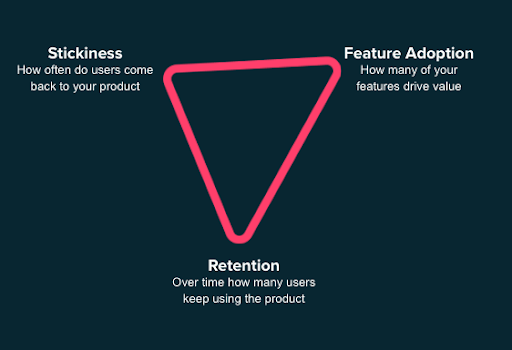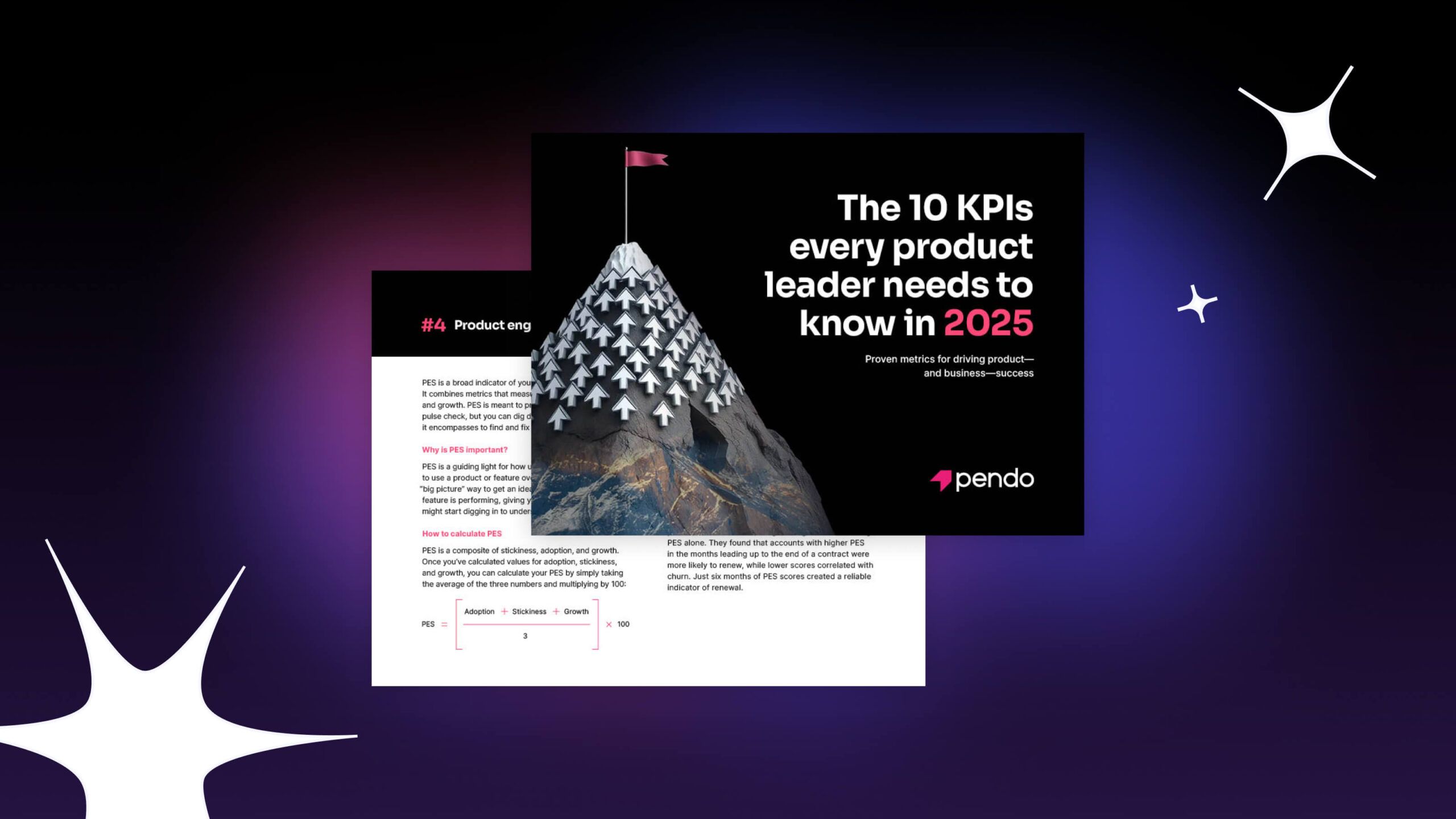Editor’s note: In January 2022, we updated the calculations for two of the Product Engagement Score (PES) components to make the metric more stable and actionable. Learn more about the changes to PES here.
Product management isn’t the same discipline as it was just a decade or so ago. The field has evolved from one where decisions were often made on gut-instinct alone to one that’s increasingly data-driven. Product development is a process of continuous experimentation and iteration, testing and responding to what customers want and need.
Product teams have changed, too. They’re not just building and shipping features anymore—the product decisions they’re making are shaping the entire business in a more product-led world. The pleasure or pain users experience when first logging into your product is now a moment of truth that determines whether they become long-term advocates or abandon ship before ever really getting started.
To make sure users’ needs are addressed and you’re a step ahead of any friction they might encounter, you need strong data and reliable metrics to light your way. Three metrics stand out: feature adoption, retention, and stickiness. Taken together, they can be used to produce the Product Engagement Score, a powerful, holistic measure of how engaging your product is.
In a recent webinar, Pendo’s Director of Product Ops, Christine Itwaru, and Chas Scarantino, Pendo’s Managing Director, EMEA, broke down how to calculate your own product engagement score, and how to incorporate it into the DNA of your organization.
What is product engagement?
Product engagement can be defined, at either a granular or macro level, as the way users are engaging with your product, measured as an average of the three metrics mentioned above:

To illustrate each, Scarantino used a real-world example most of us are probably familiar with: mobile banking. When he first opened up his bank account with Barclays, Scarantino used their mobile app mostly to check his balance every once in a while—he’d adopted one of the app’s features. As his needs grew, he began exploring other functionality, increasing his daily usage, and introduced his wife to the app, too. In other words, he and his family became stickier users. Now, he can’t imagine his family being without those capabilities to manage their finances: Barclays has retained them as highly-engaged customers.
Measuring product engagement can be used to benchmark certain parts of your product or releases, Scaratino said.
Embedding product engagement in your team’s DNA
To start putting the product engagement score to work for your organization, start basing a few goals around it for each release, said Itwaru. The earlier you set those goals and the more rigor you can enforce around using PES as a KPI, the more embedded the practice will become in your business and product team.
Once you’ve begun tracking product engagement, you can make the numbers available across the organization, so that everyone can measure what’s driving success or holding it down. That can help engineering execute faster and more successfully, improve decision-making and influence on product teams, and empower customer success and the sales org to showcase new functionality or drive meaningful conversations.
For executives, measuring product engagement provides a clearer way to report the effectiveness of releases to the board, rather than using lagging indicators like ARR or churn.
“We definitely want to use numbers to tell a story, and this is a number that tells a story,” Itwaru said. “At Pendo, we have dashboards that we put out for each feature we release, so those numbers are front and center to track success.”
Next, you can start rolling out targeted campaigns to drive your PES up. If you notice that adoption is suffering for a particular feature, for instance, it might be time to engage marketing and develop a campaign to promote it. Or, perhaps you need to rethink, redesign, or expand your onboarding process for that feature. If you see DAU or MAU start to slip, you can begin to explore why that might be the case and what’s changed in your customer base to cause that.
Ultimately, you’ll be able to develop a data-driven product roadmap and create baselines to measure its success. “You have these numbers in front of you, you have the power,” Itwaru said. “Data is currency. Don’t lose it. You want to use that data because you need to be in a seat of power in your business to drive business outcomes and having that in front of you during conversations with stakeholders helps you get to that decision point faster.”
Scarantino said it’s likely most people working on a digital product or experience have been looking for a way to communicate product effectiveness and engagement for a while. “When you can get a common set of words, all of a sudden you bridge that gap,” he said. “You don’t have to wade into this slowly—start thinking about it. Get people excited about using it in their daily process.”
Interested in having your product engagement assessed? Request an assessment today.
https://pendo-1.wistia.com/medias/729zltxxd6?embedType=iframe&videoWidth=720




